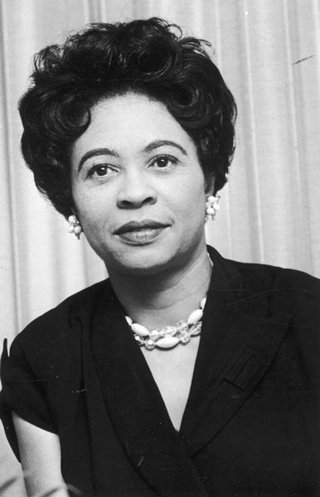Black History Month Feature:
Daisy Bates a First Lady for Desegregation
 Daisy Bates (source: wikipedia.org)
Daisy Bates (source: wikipedia.org)
Black History Month is an annual observance for the remembrance of significant people and events in African-American history. It is celebrated in February in the United States and Canada. Youth for Human Rights International celebrates Black History Month in honor of all of those whose courage and determination helped secure the civil rights millions enjoy today.
With many people unaware of their rights, the question arises: who will make sure human rights are respected? To answer, we can draw inspiration from those who made a difference and helped create the human rights we have today. These humanitarians stood up for human rights because they recognized that peace and progress can never be achieved without them. Each, in a significant way, changed the world.
Daisy Bates was a human rights activist who dedicated herself body and soul to revolutionizing the rights and freedoms of African Americans everywhere. Known best for her part in the movement to end segregation in schools that culminated in the Little Rock Nine incident, Bates has come to be known as an innovative icon in the advance of civil rights.
Director of a biographical film based on Daisy Bates’ life Sharon La Cruise said, “I truly believe the measure of a person’s life is the friends they left behind. Daisy Bates left behind a wonderful group of friends who loved her for all she was and wasn’t.”
Bates’ story began in 1954, when the Supreme Court of the United States ruled in the watershed Brown v. Board of Education that segregation was unconstitutional. Then president of the Arkansas chapter of the NAACP, Bates drove the movement for desegregation of schools, in collaboration with her husband, L.C. Bates, NAACP regional director. Together, the couple also ran the largest black newspaper in the state, the Arkansas State Press. He was the publisher; she was the lead reporter.
According to her friend Annie Abrams, Bates emanated a certain “star quality” and stood out as one of the few females in a leadership position in the movement for African-American rights at the time.
“The reason they were larger than life [is that] Daisy and L.C. were always challenging whatever [was] the prevailing attitude of white authority, of segregation…,” said Ernest Green, a civil rights activist and close associate of theirs.
In 1957, when the 1954 Brown v. Board of Education ruling to integrate public schools had yet to be implemented, Daisy Bates and the NAACP sent nine students into Little Rock Central High School to force the issue.
On September 24, 1957, President Dwight Eisenhower sent 1,200 troops from Fort Campbell, Kentucky, into Little Rock. Member of the ‘Little Rock Nine’ Ernest Green recalls the scene at Daisy Bates’ home, the headquarters of the operation, before the movement erupted:
“What I remember at Ms. Bates’ house is that you had all this drama going on, but we were still teenagers. … And Daisy said: ‘Look, this is a very important moment. The fact that the President of the United States has sent the United States Army here to escort you into school means that this government is finally serious about school desegregation.”
On September 25, escorted by troops, the Little Rock Nine attended their first day of classes at Central High School, the first African Americans to attend.
Bates received considerable acclaim for her leading role and contributions to this landmark achievement. She was named woman of the year by the National Council of Negro Women in 1957. In 1958, along with the Little Rock Nine, she received the NAACP’s Spingarn Medal. In 1984, Bates received an honorary Doctorate of Law from the University of Arkansas.
The Little Rock Nine were honored at the White House by President Bill Clinton in 1999. The street connecting to Little Rock Central High School is named after Bates, as is the Daisy Bates Elementary School in Little Rock. The third Monday in February is Daisy Gatson Bates Day in Arkansas.
More than 50 years later, the woman who led the movement in the Little Rock Nine incident remains an unforgettable symbol of the American Civil Rights movement for her unwavering courage in the pursuit of human rights.
Youth for Human Rights International is a nonprofit organization founded in 2001 to teach youth about human rights and inspire them to become advocates for tolerance and peace. Since its inception, it has grown into a global movement, including hundreds of groups, clubs and chapters around the world.
